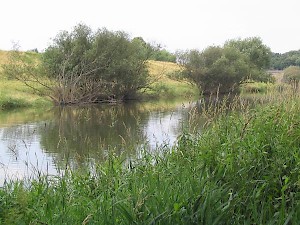Holsterhausen
Q2179589Holsterhausen: town in modern Germany, site of an ancient Roman camp.

The Roman camp at Holsterhausen, some 30 kilometers east of the legionary base at Xanten, probably belongs to to the first phase of the Roman expansion into the valley of the river Lippe. This first phase had started in 12 BCE, when prince Drusus attacked the Sugambrians, a tribe living east of the Rhine. By the end of the following year, the fortress at Oberaden was built. Three legions used it as their winter quarters. Holsterhausen seems to belong to this same period. It offered accommodation to two legions.
In the summer of 9, Drusus died, and he was succeeded by his brother Tiberius, a capable general who understood that Germania was too poor to be a valuable part of the empire. On the other hand, the armies could not be recalled after the death of Drusus: that would look as if the Romans had been defeated. So, he deported the Sugambrians to Xanten; they became known as the Cugerni. The soldiers of Oberaden were transferred to a new and better camp at Haltern, where the presence of the Nineteenth legion is attested. This was the second phase of the Germanic war.
The third phase starts after an insurrection in 1 BCE or 1 CE. Again, troops were redeployed: e.g., the military base at Anreppen was founded. The next few years, the area remained quiet, until in 9, the Roman governor of Germania, Publius Quinctilius Varus, was unexpectedly defeated in the Teutoburg Forest.
The Romans did not give up their claims to the valley of the Lippe immediately -Tiberius and Drusus' son Germanicus conducted campaigns to recover the Roman possessions on the east bank of the Rhine. This was the fourth phase. However, after 17, the area was left to the Germanic tribes and the name of the modern village, Dorsten, is derived from the Germanic Durstina.
The military base of Holsterhausen may have been reoccupied in these final years. Unfortunately, it is hard to excavate the settlement because there is a modern town on top of it. In 1999-2000, however, archaeologists were able to investigate a large part, and to find out that the site was in use between 11 and 7 BCE, and probably later. There is no evidence from the fourth phase.
No buildings have been identified: there were only tents, ovens, and wells within the perimeter of the wall.